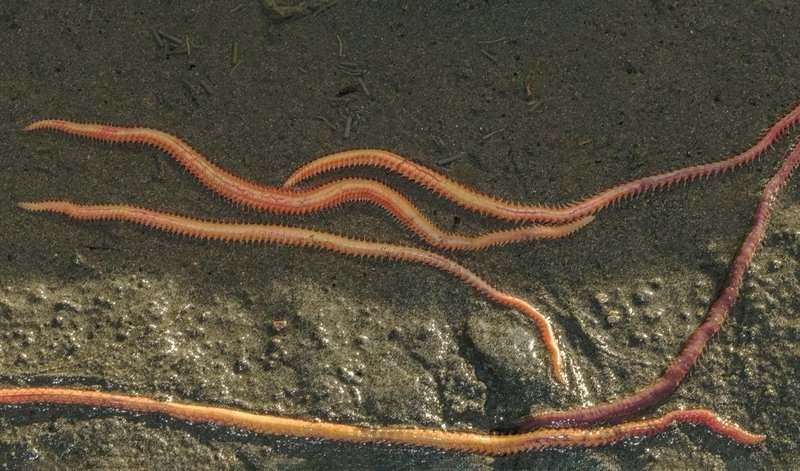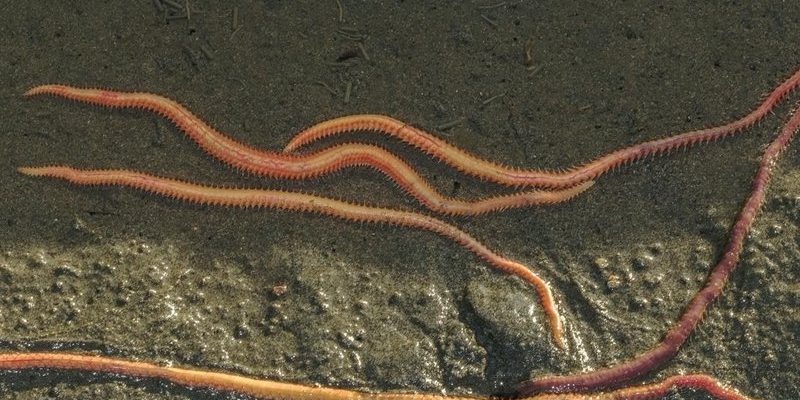
Think of it like trying to adapt a fish to live in a different kind of water. Some fish handle the transition just fine, while others may struggle or not survive at all. In the same way, bristle worms have unique adaptations that make them suited for their habitats. So, let’s dive deeper into this topic and unravel the mysteries of freshwater and brackish bristle worms.
What Are Bristle Worms?
Bristle worms belong to the class Polychaeta, which means “many bristles.” These little guys are more complex than they seem at first glance. They’re typically segmented and have hair-like structures called **chaetae** that help them move and catch food. Most bristle worms live in marine environments, making them a common sight for divers or beachcombers.
Interestingly, there are over 10,000 species of bristle worms, showcasing an incredible diversity. They play a crucial role in the ecosystem, breaking down organic matter and serving as a food source for various marine animals. You might think of them as the unsung heroes of the ocean floor, quietly recycling nutrients while going mostly unnoticed.
Now, the idea of **freshwater or brackish bristle worms** sparks curiosity. While most are adapted to saltwater, there are exceptions, but it’s not as straightforward as it might sound.
Freshwater Bristle Worms: Are They Really A Thing?
You might be wondering if freshwater bristle worms really exist. The short answer is: yes, but they’re not as common as their saltwater cousins. Freshwater habitats can be less stable and more variable than marine environments, so many of the species adapted to freshwater are quite different.
For instance, some newly discovered species have been found in lakes and rivers, thriving in low-salinity environments. **Freshwater bristle worms** usually have fewer bristles and a different body structure compared to those that live in the ocean. These adaptations allow them to navigate their unique habitats better.
One key factor that makes freshwater habitats challenging is the availability of nutrients. Unlike the nutrient-rich ocean, freshwater bodies can fluctuate in quality. This means that the worms must adapt not just to the water type but also to the nutrition available.
What About Brackish Water? A Middle Ground
Brackish water is a blend of freshwater and saltwater, often found in estuaries where rivers meet the sea. It’s a fascinating environment since it combines traits from both types of water. In fact, many species actually thrive in this middle ground.
Bristle worms can adapt to these conditions, and some species have even evolved specifically for brackish habitats. They can tolerate the salinity changes and still perform their essential ecological roles. This adaptability makes them valuable indicators of environmental change.
If you’re curious about the types of bristle worms that live in brackish waters, you’ll find a variety of species. They tend to be more versatile than their strictly freshwater or saltwater counterparts.
The Challenges of Living in Freshwater and Brackish Environments
Living in freshwater and brackish environments presents unique challenges for bristle worms. First off, the **salinity levels** in these waters can vary widely. For worms that have adapted to saltier environments, this can lead to issues like osmoregulation. Basically, it’s all about balancing the salt concentrations inside and outside their bodies.
Another challenge is the competition for resources. In freshwater, worms must contend with different types of organisms, including other invertebrates and even fish that may prey on them. This competition dictates where bristle worms can thrive and how many can be supported in a given habitat.
Lastly, the availability of organic matter plays a huge role. In saltwater, bristle worms feast on decaying plants and animals, but in freshwater, they may need to adapt their diets. Some may rely on leaf litter or algae, which requires a slightly different feeding strategy.
How Can You Care For Freshwater or Brackish Bristle Worms?
If you’re intrigued by the idea of keeping bristle worms, whether for a saltwater aquarium or a brackish setup, there are a few things to consider. First, you need to know which type of bristle worm you have. Since they are quite sensitive to their environment, understanding their specific needs is crucial.
Here are a few tips for keeping these creatures:
- Monitor Water Conditions: Regularly check salinity levels, temperature, and pH. This is key to creating a stable environment for them.
- Choose Suitable Food: Make sure to provide appropriate organic matter for them to eat. This can include commercial foods designed for marine worms or natural debris.
- Be Cautious of Tank Mates: Some fish may see bristle worms as a tasty snack. Choose tank mates that are known to be peaceful.
- Regular Maintenance: Keep the tank clean and ensure that any waste is removed. This helps maintain a healthy environment for the worms.
By keeping these tips in mind, you can create a thriving environment for your bristle worms, whether in freshwater or brackish setups.
The Future of Freshwater and Brackish Bristle Worm Studies
As researchers dive deeper into the world of bristle worms, we’re likely to uncover even more fascinating facts about them. The study of these creatures can provide insights into ecosystem health, especially as we face climate change and habitat loss.
Understanding how they adapt to various environments can help scientists predict how other marine and freshwater species may respond to changes in their ecosystems. This is vital for conservation efforts, as it allows us to take proactive steps in safeguarding these habitats.
Moreover, the potential for **discovering new species** continues to grow. Many areas of freshwater and brackish environments remain underexplored. Who knows what we might find if scientists can conduct more field studies in these unique habitats?
Wrapping Up Our Exploration
So, can bristle worms live in freshwater or brackish water? The answer is a qualified yes. While most are adapted to marine environments, some have successfully made the leap into freshwater and brackish habitats. Their adaptability showcases the incredible diversity of life on our planet.
Whether you’re a budding aquarist or simply fascinated by the natural world, understanding bristle worms opens a window into the complexity of ecosystems. By learning more about these little creatures, we can appreciate the delicate balance of our waterways and the life they support.
Now, next time you find yourself near a river or estuary, take a moment to think about the unseen heroes living below the surface. You never know what wonders await!

